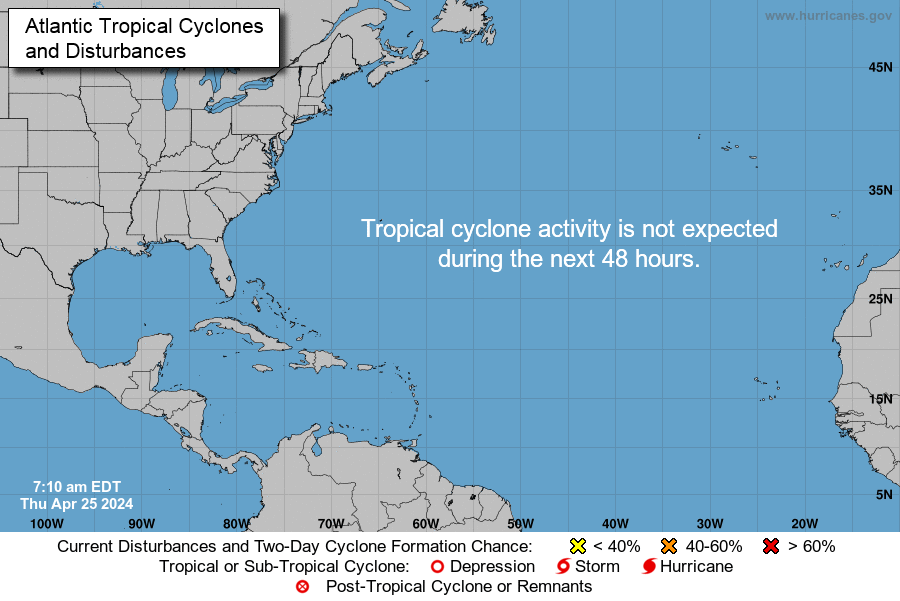
Posted on 09/04/2017 2:02:19 PM PDT by NautiNurse
While thoughts and prayers are with our Texas FRiends and neighbors, we are at the peak of the Atlantic Tropical Storm season. Hurricane Irma continues its trek from Cape Verde across the pond and toward the Hebert Box (see below). People with interests in the Southeastern U.S. and Gulf of Mexico should be alert to the forecast path updates for this powerful storm. It is important to note that the average NHC track errors are about 175 and 225 statute miles at days 4 and 5, respectively.
Hurricane Irma originally had a small wind field. In the past 24 hours, however, the wind field has expanded with hurriance force winds up to 40 miles from the center, and tropical storm force winds up to 140 miles from the storm center.
FL Governor Rick Scott reminds Floridians: Families should take time today to make sure you have a disaster plan and fully-stocked Disaster Supply Kit. Florida residents from West Palm Beach to Tampa Bay are heeding the alert. Store shelves are emptying of bottled water.


Mash image to find lots of satellite imagery links
Public Advisories
NHC Discussions
NOAA Local Weather Statements/Radar San Juan, Puerto Rico
NHC Local Weather Statements/Radar Miami, FL
NHC Local Weather Statements/Radar Key West, FL
Buoy Data Caribbean
Buoy Data SE US & GOM

Hebert Box - Mash Pic for Tutorial
Credit: By J Cricket - Modification of map from Wiki
A classic example is David and Frederic in 1979. David hindered Fredric until he got away from David’s track and into the Gulf and then intensified into a storm worthy of retirement.

Wow looks like they are just about to get a direct hit.
That is a picture I would normally expect to see in the Western Pacific. Poor Barbuda. Hell on Earth is coming your way.
Oh, you meant the super typhoons that can make landfall in the eastern Philippines? The scary part is Irma now reminds me of one. And even scarier is if Irma does not make a north turn as many weather forecasters predict, we could have a strengthened to Category 5 hurricane in the very warm waters of the Gulf of Mexico.... 
Jose appears as if it may curve out to sea toward Bermuda, but it is too early to be sure.
Yes. It’s the heat from the warm water that gives the hurricanes their energy.
If the water is above 80 F it feeds it. If it’s below 80, they die out.
That’s one reason they weaken as they go north.
Also, they stir up the water and bring the cooler water yup to the surface.

Here is a Live Web Cam from St-Barth that is just West of Barbuda. You can see the wind is certainly picking up.
https://www.youtube.com/watch?v=hG-GpHPkBoM
I will go in after street is cleared enough. Reciprosaw is to cut drywall etc at 8”” above the high water line. The faster that and floor covering are out, the easier it is to save the house.
“There’s a shrine at a Catholic Church that came from a Nuns vision. It’s protected Key West from hurricanes since it was built. Take it for what it’s worth.”
Thanks for that bit of info!
think of a hurricane as a large scale energy dissipation machine
If it is coming to Tampa, they will be gone to my sister’s in Georgia. I think that I want to go back in with them afterward to deal with whatever they find and prepare for rebuild.
I have been through two derecho storms of over 100 mph and had some near miss tornados.
Was in tents at Fort Riley on the bluff above the Kaw River near Funston when a Derecho like a five mile wide tornado came across the valley laying trees down like grass. Awesome experience to be out in the weather like that. Had a GP Medium double roped and double stakes with 32” stakes and it broke ALL the ropes and the tent went a hundred yards which as it was wet and weighed wet about 300 pounds is pretty interesting. We had one GP Small we never found.
Where were you when your tent went flying?
Energy Redistribution Machine
Maybe they should consider leaving sooner rather than later. My big fear is that because there is such uncertainty about the path, many folks will wait up to the last minute, and roads out of Florida will become a parking lot with a massive storm bearing down.
But yeah, the heat itself is energy. 'Course you knew that.
It does stand to reason --remove some of the heat (take it up into the sky) would result in less energy (in form of heat) left in the water in wake of a storm. Liquid water has to move in from somewhere to replace what had evaporated. Some of it will rise due to reduced pressure, while what's left on the surface will end up a little cooler just from being shielded from the Sun adding more heat, too, which could result in thinner layers of heated (warmer) water over colder water deeper down. All which adds up to less energy being available, even with myself here missing explanation of yet other factors in regards to colder waters replacing (if but in part) warmer water that went up into the sky.

I swear it was that woman. She couldn't keep her hands off of me. She eventually wore me down, and so I gave in and gave her what she wanted...and now I'm all worn down, again.
Disclaimer: Opinions posted on Free Republic are those of the individual posters and do not necessarily represent the opinion of Free Republic or its management. All materials posted herein are protected by copyright law and the exemption for fair use of copyrighted works.